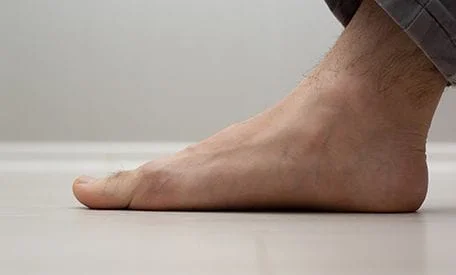
What are Flat Feet?
Also known as overpronation, flat feet are a foot condition that develops and affects the bottom of the feet—the sole between the ball of the foot and heel is not lifted and touches the floor when walking. Patients with flat feet do not have a normal arch as a result of loose tendons that attach muscle to bone. Flat feet may also sometimes be called pes planus or pes valgus.
What Are the Causes of Flat Feet?
Flat feet can be caused for several different reasons, including:
- genetic conditions such as Marfan Syndrome or Ehlers-Danlos Syndrome
- aging
- foot trauma
- inherited trait
- diabetes
- rheumatoid arthritis
- peripheral neuropathy
Flat feet are a common occurrence in babies and toddlers. However, for most, this goes away during childhood as the foot arch develops.
Some patients, especially adults, may also experience flexible flatfoot. When this occurs, the arch becomes flat when walking or putting pressure on the foot and returns to the normal arch position when lifted off the ground or resting position. Approximately 15% to 25% of adults have flexible flatfoot but experience no symptoms or discomfort.
What Are the Symptoms of Flat Feet?
Most patients with flat feet do not experience any symptoms. However, it's best to see a podiatrist if you experience any of the following symptoms:
- foot pain—especially between the heel and ball of the foot
- foot pain after any physical activity such as walking or running
- swelling and inflammation
- tight heels
- pain outside the ankle
What to Expect During Treatment for Flat Feet at the Podiatrist
For most patients, flat feet are not a cause for worry. However, if you are experiencing symptoms of pain in your mid-sole region after regular physical activity, a podiatrist can help treat and manage your symptoms.
Diagnosis of flat feet begins with a complete foot exam, along with imaging tests such as X-rays, CT scans, and MRIs to determine the bone, muscle, and ligament structure within one or both of your feet. Your podiatric physician may also examine your gait while you walk and run to determine if you have rigid flatfeet or flexible flatfeet. Treatment of flat feet is individualized and depends on the severity of symptoms. It can include:
- custom orthotics—arch supports to help relieve pain
- correctly fitted orthopedic shoes with arch support
- cortisone injections
- stretching exercises and physical therapy
- pain-relief medication
- rest and icing
- surgery—only a last case resort and maybe one of the following:
- Achilles tendon lengthening
- Osteotomy—cutting and restructuring of bone to rebuild the arch
- Tenosynovectomy
- Tendon transfer
- Fusion of joints—mainly for patients with rheumatoid arthritis
